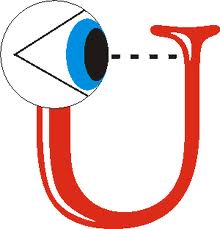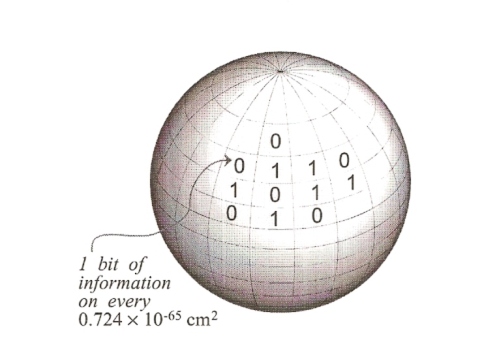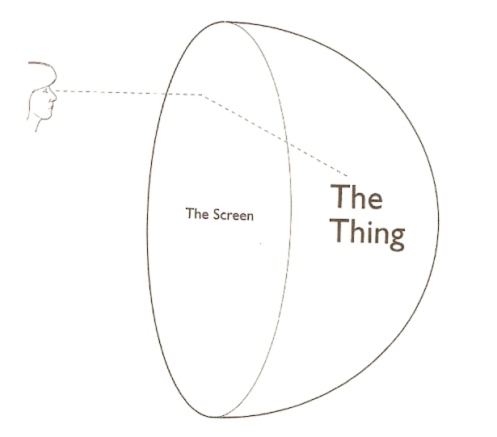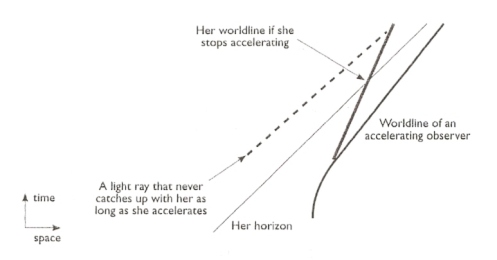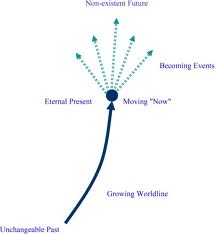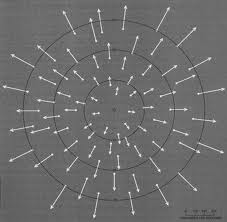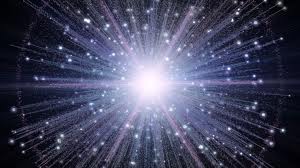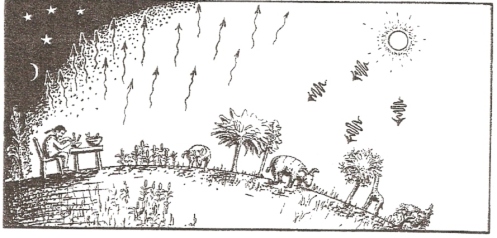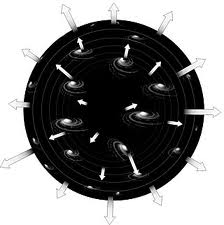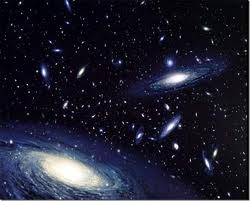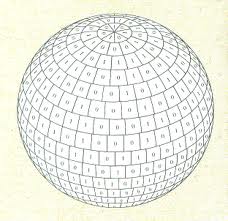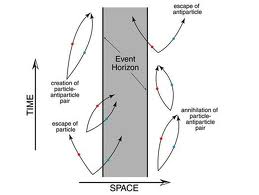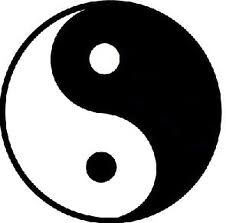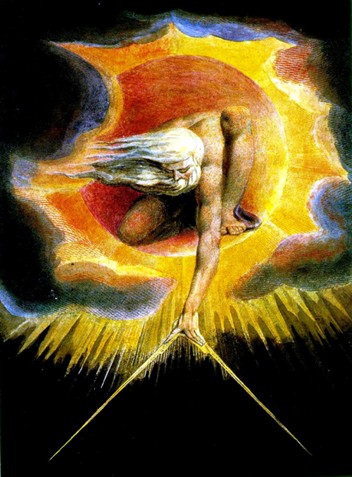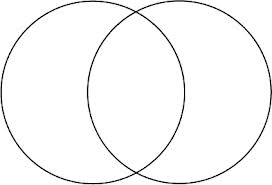Atman is Brahman
Only the onlooker is real, call him Self or Atman.
Whatever happens, I remain. At the root of my being is pure awareness, a speck of intense light. This speck, by its nature, radiates and creates pictures in space and events in time, effortlessly and spontaneously.
-Nisargadatta Maharaj
Whatever happens, I remain. At the root of my being is pure awareness, a speck of intense light. This speck, by its nature, radiates and creates pictures in space and events in time, effortlessly and spontaneously.
-Nisargadatta Maharaj
That which permeates all, which nothing transcends and which, like the universal space around us, fills everything completely from within and without, that Supreme non-dual Brahman−that thou art.
Brahman is the only truth. The world is illusion, and there is ultimately no difference between Brahman and Atman.
-Shankara
Brahman is the only truth. The world is illusion, and there is ultimately no difference between Brahman and Atman.
-Shankara
In nondual metaphysics, the observer is referred to as Self or Atman, and the observer’s underlying reality is referred to as Source or Brahman. Atman is understood as the nature of individual consciousness and Brahman as the nature of absolute reality. The direct experience that there is ultimately no difference between Atman and Brahman is the most profound realization that is possible. Amazingly, this profound realization can now be understood scientifically in terms of recent conceptual developments in theoretical physics.
Recent developments in theoretical physics are paradigm shattering, and turn our conventional common sense ideas about the world inside out. These concepts point to that which is truly out-of-this-world. These recently discovered scientific concepts confirm what nondual metaphysics has told us about the nature of reality for thousands of years of human history.
The holographic principle is the most amazing of these paradigm shattering developments. This principle tells us that the usual three dimensional world of matter and energy we perceive is something of an illusion. The world is really not three dimensional at all, but two dimensional. All the fundamental quantized bits of information for everything that appears to happen in any finite region of three dimensional space are encoded on the two dimensional bounding surface of that space. Information is encoded in a pixelated way. The bounding surface is like a holographic screen that encodes all the bits of information. One bit of information is encoded per pixel on the screen:
The holographic principle implies the existence of an observer. Everything the observer observes in its world is like the projection of images from the holographic screen to the central point of view of the observer:
The perceivable images of things are composed of bits of information, just like the images displayed on a computer screen. The holographic principle is based on thermodynamic concepts. In this sense, bits of information encoded on the screen in a binary code of 1′s and 0′s can flip back and forth due to their thermal energy, but they can also align together due to their interactions and form coherently organized bound states. These bound states of information are the nature of the images displayed on the holographic screen. Just like computer images or the images of a movie, the images are animated over a sequence of events in the flow of energy. Due to their coherent organization, the images tend to self-replicate their forms.
The nature of the observer is understood in the sense of the principle of equivalence. The holographic screen that displays forms of information in the observer’s world is an event horizon that arises as the observer expends energy, enters into an accelerated frame of reference, and follows a time-like worldline:
The observer’s horizon acts as a holographic screen that encodes bits of information. There are many different ways in which information can become encoded on the screen, which defines a quantum state of potentiality. The observer’s accelerated worldline is only a sequence of events that arise in the flow of energy. Quantum theory tells us every event is a decision point where the quantum state branches into all possible paths, and there is always a choice about which path to follow:
The principle of equivalence tells us that the flow of time is only an ordered sequence of events that arises on the observer’s time-like worldline. That ordered sequence of events arises naturally in the normal flow of energy that characterizes the observer’s world. Due to memory and mental imagination, the observer can experience past and future events, but the observer is always present now.
A remarkable recent discovery in cosmology is that the observer’s world is characterized by exponential expansion, dark energy, and a cosmic event horizon. The cosmic horizon is a spherical surface in space that is as far out in space as the observer at the central point of view can see things in space due to the constancy of the speed of light. Dark energy is like a force of anti-gravity. Due to exponential expansion of space, things appear to move away from the observer at the cosmic horizon at the speed of light:
Inflationary cosmology tells us the observer’s world begins as a big bang event and inflates in size from a Planck length to its current size of about 15 billion light years due to an instability in dark energy. This instability is like a process of burning that burns up dark energy. As dark energy burns up, heat is radiated away as all the usual forms of matter and energy the observer now finds in its world. As the dark energy burns away, the observer’s cosmic horizon inflates in size. Nothing is hotter than the observer’s cosmic horizon at the time of the big bang, and nothing is colder than a maximally inflated cosmic horizon.
The normal flow of energy arises in the observer’s world as heat flows in this universal thermal gradient from the very hot big bang event to all colder states of the observer’s world defined by an inflated horizon. The observer’s cosmic horizon inflates in size as dark energy burns away. This normal flow of energy is driven by the acceleration of space itself. As dark energy burns away, the acceleration of space deaccelerates, but it never stops accelerating as long as there is more dark energy to burn.
The normal flow of energy in the observer’s world arises as heat tends to flow in this universal thermal gradient and all things tend to follow the path of least action. As heat flows from a hotter to a colder object, energy tends to become dispersed into lower frequencies. Since energy is quantized in terms of frequency as E=hf, as energy becomes dispersed into lower frequencies, more quantum degrees of freedom are created, which is called an increase in entropy. Each photon of electromagnetic radiation acts as a particle or independent degree of freedom. As heat flows in a thermal gradient and energy becomes dispersed into lower frequencies, more photons are created. This normal flow of energy drives all physical and biological processes in the observer’s world.
In an exponentially expanding world with dark energy, every observer is surrounded by its own cosmic horizon. The cosmic horizon is a bounding surface in space, and the observer is present at the central point of view. The holographic principle tells us the cosmic horizon acts as a holographic screen that encodes bits of information for everything the observer observes in the space bounded by that surface:
The remarkable conclusion of these ideas is the one-world-per-observer paradigm. Every observer is surrounded by its own cosmic horizon, and all the information for everything the observer observes in that bounded space is encoded on the bounding surface of that space.
The one-world-per-observer paradigm tells us the observer’s world only has one frame of reference; the frame of reference of the observer itself. As the observer expends energy, enters into an accelerated frame of reference and follows a time-like worldline, all information for all things the observer observes in its world is defined on its horizon, which acts as a holographic screen.
The holographic principle tells us the observer’s horizon acts as a holographic screen that encodes information. The encoding of information on the screen is related to the separation of virtual particle-antiparticle pairs at the horizon. Virtual pairs are spontaneously created out of nothing and normally annihilate back into nothing in a short period of time as specified by the uncertainty principle, but from the perspective of an accelerated external observer virtual pairs can appear to separate at the horizon. A virtual particle that separates from its antiparticle appears to become real as it is radiated away from the horizon towards the external observer:
But things appear very different for a freely falling observer that falls through the horizon. The horizon only arises from the point of view of the accelerated external observer. For the freely falling observer the horizon does not exist and there are no radiated particles. This radical discrepancy in observations is called horizon complementarity. What one observer observes to happen in its world may be radically different than what another observer observes to happen in its world, and those differing observations need not agree if there is no possible way for the different observers to compare their individual observations. It is as though each observer inhabits its own private world. Whatever appears to exist in one observer’s world need not agree with what appears to exist in another observer’s world.
If the observer’s horizon is a holographic screen that encodes information for everything in the observer’s world, and if that horizon disappears as the observer enters into a state of free fall, then the observer’s world disappears.
The holographic principle tells us that all information is encoded on the observer’s screen as virtual particle-antiparticle pairs appear to separate at the observer’s horizon. The horizon is a bounding surface in space that limits observations in the observer’s world. Virtual particle-antiparticle pairs can appear to separate, but they are in an ultimate state of positive-negative balance since they are created out of nothing, and all of that virtual energy must ultimately add up to nothing. This is possible in cosmology since the negative potential energy of gravitational attraction can exactly cancel out all positive forms of energy. Things are always in a state of balance in the observer’s world since all things arise through a virtual creation process:
Before anything is created in the observer’s world, nothing exists.
A holographic screen is an event horizon that limits observations in the observer’s world. The screen is a bounding surface of space that encodes bits of information for the image of anything perceived in the space bounded by that surface. That bounded space is the nature of the observer’s world, and the observer is always present at the central point of view of its world.
The observer is immaterial in precisely this sense: the observer is not some thing the observer measures in its world; the observer is the measure of all things in its world:
The one-world-per-observer paradigm tells us that all things in the observer’s world are measured in the frame of reference of a single observer. The holographic principle tells us that the information for all things that appear in the observer’s world is defined on a bounding surface of space. The observer is nothing more than the consciousness present at the central point of view of that bounding surface. That bounding surface is an event horizon that arises as the observer expends energy, enters into an accelerated frame of reference, and follows a time-like worldline.
It only makes sense to discuss a consensual reality to the extent that the worlds of different observers become entangled and share information with each other. This is possible in cosmology since different cosmic horizons that bound different regions of space can overlap with each other:
The observer is present at the central point of view of its world. The holographic principle tells us that the observer is nothing more than the consciousness present at the central point of view of its world, while all the images of things in the observer’s world appear on the bounding surface of its world. The bounding surface is an event horizon that acts as a holographic screen and encodes information. The observer’s horizon only arises as the observer expends energy, enters into an accelerated frame of reference, and follows a time-like worldline.
A strange aspect of the holographic principle is horizon complementarity. If the observer stops expending energy, stops accelerating, and enters into a state of free fall, the observer’s horizon disappears. The observer’s horizon acts as a holographic screen that displays images of things in the observer’s world. If the observer enters into a state of free fall, the observer’s world disappears. Consciousness itself, present at a point of view, enters into a state of ultimate free fall, and its world disappears. Only the observer’s underlying reality remains as the observer’s world disappears. That underlying reality is only describable as void, or an empty space of potentiality:
The observer is the consciousness present at the central point of view of its world. That presence of consciousness is called Atman. The observer’s world is defined on a holographic screen that bounds the observer. The observer’s holographic screen is a bounding surface that encodes information for all the things the observer observes in the space bounded by that surface, and defines the observer’s world. The observer’s holographic screen is only an event horizon that arises as the observer expends energy, enters into an accelerated frame of reference and follows a time-like worldline.
If the observer stops expending energy, stops accelerating, and enters into a state of ultimate free fall, the observer’s horizon disappears, and the observer’s world as defined on its holographic screen disappears. Only the observer’s underlying reality remains as the observer’s world disappears. Just as the observer’s world is the manifested nature of its reality, its underlying reality is unmanifested. The observer’s underlying reality is only describable as infinite void, or an empty space of potentiality. That underlying reality is called Brahman.
The observer’s underlying reality is the true nature of its absolute timeless existence, the true nature of what it is, the true nature of its being. That undivided being is void. That underlying reality is the ground of being. The only true knowledge the observer can ever know about itself is that it exists.
The observer’s world is a holographic illusion of animated images displayed on the bounding surface of a holographic screen. In a state of ultimate free fall, the observer’s world disappears, and only the observer’s underlying reality remains.
Ultimately, there is no difference between Atman and Brahman.
Brahman is the only truth. The world is illusion, and there is ultimately no difference between Brahman and Atman.
That which permeates all, which nothing transcends and which, like the universal space around us, fills everything completely from within and without, that Supreme non-dual Brahman−that thou art.
There is nothing inconsistent with the concepts of modern physics and the nondual concept of truth realization and the one-world-per-observer paradigm. These nondual concepts are the inevitable conclusion of basic scientific principles, which include the holographic principle, the principle of equivalence, the action principle, the uncertainty principle, horizon complementarity, and the nature of dark energy, inflationary cosmology and the exponential expansion of space.
These principles tell us that ultimately there is no difference between the nature of individual consciousness and absolute reality. The observer is the nature of individual consciousness present at the center of its world, the observer’s world is defined on a bounding surface of space, and the observer’s underlying reality is undivided infinite void. When all bounding surfaces of space disappear, only the observer’s underlying reality remains. That underlying reality is undivided being.
The observer is the nature of individual consciousness and is called the Self, but the observer is not a differentiated individual entity. All aspects of self in the sense of a differentiated individual entity are a part of dualistic reality. Dualistic reality is like a virtual reality or a dream state, very much like a movie of animated images projected from a holographic screen to the central point of view of an observer. The holographic screen is only a bounding surface in space that encodes information about the observer’s world, while the observer is nothing more than the consciousness present at the center of its world. All aspects of self in the sense of a differentiated individual entity are a part of the observer’s world as animated on its holographic screen.
Those aspects of self are the nature of a holographic illusion. They are unreal in the sense of a virtual reality. They have no being. The true nature of being is inherent to the observer’s underlying reality, but that underlying reality is undivided in the sense of infinite void or undifferentiated consciousness. When all bounding surfaces of space disappear, when the observer’s world disappears, when all differentiated individual aspects of self disappear, only the observer’s undivided underlying reality remains.
Truth realization is described as dissolution. The observer dissolves back into its source like a drop of water dissolves back into the ocean.
The Buddha expressed everything there is to know about the enlightened state:
Truly, I have attained nothing from total enlightenment
The Bhagavad-Gita also describes the enlightened state:
In the knowledge of the Atman
Which is a dark night to the ignorant
The recollected mind is fully awake and aware
The ignorant are awake in their sense life
Which is darkness to the sage
Which is a dark night to the ignorant
The recollected mind is fully awake and aware
The ignorant are awake in their sense life
Which is darkness to the sage
The subtle Soul sits everywhere
The Soul’s light shines pure in every place
In its bodily prison-Spirit pure
The Soul’s light shines pure in every place
In its bodily prison-Spirit pure
Never the spirit was born
The spirit shall cease to be never
Never was time it was not
End and beginning are dreams
The spirit shall cease to be never
Never was time it was not
End and beginning are dreams
Birthless and deathless and changeless remains the spirit forever
The unreal has no being; the real never ceases to be.
Chuang Tzu expressed these ideas with the concept of no-self:
The man of Tao remains unknown
Perfect virtue produces nothing
No-self is true-self
And the greatest man is Nobody
Perfect virtue produces nothing
No-self is true-self
And the greatest man is Nobody
The Tao expresses the same concepts:
In the silence and the void
Standing alone and unchanging
Ever present and in motion
Standing alone and unchanging
Ever present and in motion
I do not know its name
Call it Tao
Call it Tao
Knowing the Self is enlightenment
The ten thousand things rise and fall while the Self watches their return
They grow and flourish and then return to the source
Returning to the source is stillness, which is the way of nature
They grow and flourish and then return to the source
Returning to the source is stillness, which is the way of nature
Ever desireless one can see the mystery
Ever desiring one can see the manifestations
These two spring from the same source but differ in name
This appears as darkness
Darkness within darkness
The gate to all mystery
Ever desiring one can see the manifestations
These two spring from the same source but differ in name
This appears as darkness
Darkness within darkness
The gate to all mystery
The farther you go, the less you know
Those who know are not learned
The learned do not know
The learned do not know
In the pursuit of learning, everyday something is acquired
In the pursuit of Tao, everyday something is dropped
Less and less is done
Until non-action is achieved
When nothing is done, nothing is left undone
The world is ruled by letting things take their course
It cannot be ruled by interfering
In the pursuit of Tao, everyday something is dropped
Less and less is done
Until non-action is achieved
When nothing is done, nothing is left undone
The world is ruled by letting things take their course
It cannot be ruled by interfering
It is more important
To see the simplicity
To realize one’s true nature
To cast off selfishness
And temper desire
To see the simplicity
To realize one’s true nature
To cast off selfishness
And temper desire
Being is born of not being
Being at one with the Tao is eternal
And though the body dies, the Tao will never pass away
And though the body dies, the Tao will never pass away
Because there is no place for death to enter
To die but not to perish is to be eternally present
Brings freedom from the fear of death
Brings freedom from the fear of death
Empty yourself of everything
Without form there is no desire
Without desire there is tranquility
Without desire there is tranquility
Tao in the world is like a river flowing home to the sea
He who follows the Tao is at one with the Tao
The form of the formless
The image of the imageless
It is called indefinable and beyond imagination
The image of the imageless
It is called indefinable and beyond imagination
Stand before it and there is no beginning
Follow it and there is no end
Follow it and there is no end
Returning is the motion of the Tao
It returns to nothingness
It leads all things back toward the great oneness
The gateless gate paradox expresses the same ideas:
The great path has no gates,
Thousands of roads enter it.
When one passes through this gateless gate,
One walks the universe alone.
Thousands of roads enter it.
When one passes through this gateless gate,
One walks the universe alone.
Plato’s description is both timeless and scientifically accurate:
They see only their own shadows, or the shadows of one another, which the fire throws on the opposite wall of the cave.
To them, the truth would be literally nothing but the shadows of the images.
See what will naturally follow if the prisoners are released and disabused of their error.
See the reality of which in his former state he had seen the shadows; and then conceive someone saying to him, that what he saw before was an illusion.
His eye is turned towards more real existence, he has a clearer vision.
Nisargadatta Maharaj gives a more contemporary scientifically accurate description of these same nondual metaphysical concepts:
First we must know ourselves as witnesses only, dimensionless and timeless centers of observation, and then realize that immense ocean of pure awareness, which is both mind and matter and beyond both.
The witness is merely a point in awareness. It has no name and form.
The witness that stands aloof-is the watchtower of the real-the point at which awareness, inherent in the unmanifested, contacts the manifested.
Awareness comes as if from a higher dimension.
Awareness is beyond all. Awareness is undivided-aware of itself.
In pure being consciousness arises; in consciousness the world appears and disappears.
Consciousness is on contact, a reflection against a surface, a state of duality.
As the tiny point of a pencil can draw innumerable pictures, so does the dimensionless point of awareness draw the contents of the vast universe.
The center is a point of void and the witness a point of pure awareness; they know themselves to be as nothing.
But the void is full to the brim. It is the eternal potential as consciousness is the eternal actual.
The ocean of consciousness is infinite and eternal.
In the ocean of pure awareness, on the surface of the universal consciousness, the numberless waves of the phenomenal worlds arise and subside beginninglessly and endlessly.
Timelessly the source actualizes itself without exhausting its infinite possibilities.
Nothing lasts. The void remains.
You remain as pure being.
Whatever happens, I remain. At the root of my being is pure awareness, a speck of intense light. This speck, by its nature, radiates and creates pictures in space and events in time, effortlessly and spontaneously.
Before all beginnings, after all endings, I am.
Names and shapes are hollow shells. What is real is nameless and formless, pure energy of life and light of consciousness.
Consciousness itself is the source of everything.
Everything is a form of energy.
You are and I am-only as points in consciousness.
All consciousness is consciousness of change.
The very perception of change-necessitates a changeless background.
Every moment returns to its source-just as every wave subsides into the ocean.
The objects in the world are many but the eye that sees them is one.
The source of consciousness cannot be an object in consciousness.
To know the source is to be the source.
Realization is in discovering the source and abiding there.
You know yourself only through the senses and the mind.
Whatever you think you are you take it to be true-imagining yourself perceivable.
I see as you see, hear as you hear.
All this I perceive quite clearly, but I am not in it.
I feel myself as floating over it, aloof and detached.
There is also the awareness of it all and a sense of immense distance as if the body and the mind and all that happens to them were somewhere far out on the horizon.
I am like a cinema screen-clear and empty.
The pictures pass over it and disappear, leaving it as clear and empty as before. In no way is the screen affected by the pictures, nor are the pictures affected by the screen.
The screen intercepts and reflects the pictures. These are lumps of destiny, but not my destiny; the destinies of the people on the screen.
The character will become a person when he begins to shape his life instead of accepting it as it comes-identifying himself with it.
To myself I am neither perceivable nor conceivable; there is nothing I can point out and say “this I am”.
Only the onlooker is real, call him Self or Atman.
It is enough to shift attention from the screen onto oneself to break the spell.
It is enough to shift attention to the Self and keep it there.
To know the picture as the play of light on the screen gives freedom from the idea that the picture is real.
This is all imagination. In the light of consciousness all sorts of things happen and one need not give special importance to any.
The world just sprouts into being out of nothing and returns to nothing.
In reality I only look. Whatever is done is done on the stage. Joy and sorrow, life and death, they are real to the man in bondage; to me they are all in the show, as unreal as the show itself.
I see only consciousness, and know everything to be but consciousness, as you know the pictures on the cinema screen to be but light.
Movement is illusory. What moves is the film-which is the mind.
Bodily existence is but-a movement in consciousness.
I am not my body. I am the witness only.
The very purpose of creation is the fulfillment of desire. Things happen by their own nature. From my point of view everything happens by itself, quite spontaneously. I do nothing. I just see them happen.
The person is never the subject. You can see a person but you are not a person.
The difference between the person and the witness is as between not knowing and knowing oneself.
Mere knowledge is not enough; the knower must be known.
Without knowledge of the knower there can be no peace.
I know myself as I am in reality.
I am neither the body nor the mind. I am beyond all these.
You are accustomed to deal with things, physical and mental.
I am not a thing, nor are you. We are neither matter nor energy, neither body nor mind.
Once you have a glimpse of your own being you will not find me difficult to understand.
You must gain your own experience.
We believe so many things on hearsay. We never cared to verify.
You are confused because you believe you are in the world, not the world in you.
You see yourself in the world, while I see the world in myself.
To you, you get born and die, while to me, the world appears and disappears.
There is nothing wrong with the senses, it is your imagination that misleads you.
There is a deep contradiction in your attitude which you do not see.
In ignorance the seer becomes the seen and in wisdom he is the seeing.
When you refuse to open your eyes, what can you be shown?
Investigate your world, apply your mind to it, examine it critically, scrutinize every idea about it.
To question-is the essence of revolt. Without revolt there can be no freedom.
The way to truth lies through the destruction of the false.
To destroy the false you must question your most inveterate beliefs. Of these the idea that you are the body is the worst.
It is the clinging to the false that makes the truth so difficult to see.
You progress by rejection.
Everything must be scrutinized and the unnecessary ruthlessly destroyed.
There cannot be too much destruction. For in reality nothing is of value.
See your world as it is, not as you imagine it to be.
See the person you imagine yourself to be as a part of the world you perceive within your mind and look at the mind from the outside, for you are not the mind.
The world you can perceive is a very small world-entirely private.
Take it to be a dream and be done with it.
What begins and ends is mere appearance. The world can be said to appear but not to be.
Nothing perceivable is real.
Reality is essentially alone. To know that nothing is, is true knowledge.
The world lasts for a moment. It is your memory that makes you think that the world continues.
Memory creates the illusion of continuity.
I see the world as it is, a momentary appearance in consciousness.
The totality of all mental projections is the Great Illusion.
When I look beyond the mind I see the witness.
Beyond the witness is infinite emptiness and silence.
For the path of return naughting oneself is necessary.
My stand I take where nothing is.
To the mind it is all darkness and silence.
It is deep and dark, mystery beyond mystery.
It is, while all else merely happens.
It is like a bottomless well, whatever falls into it disappears.
Absolute reality imparts reality to whatever comes into being.
You are the source of reality-a dimensionless center of perception that imparts reality to whatever it perceives-a pure witness that watches what is going on and remains unaffected.
It is only imagination and self-identification with the imagined that encloses and converts the inner watcher into a person.
The person is merely the result of a misunderstanding. In reality there is no such thing.
Feelings, thoughts and actions race before the watcher in endless succession.
In reality there is no person, only the watcher identifying itself.
Self-identifications are patently false and the cause of bondage.
Liberation is never of the person, it is always from the person.
What is liberation? To know that you are beyond birth and death.
Go beyond, go back to the source, go to the Self that is the same whatever happens. See everything as emanating from the light which is the source of your own being.
By forgetting who you are and imagining yourself a mortal creature you create so much trouble for yourself that you have to wake up, like from a bad dream.
What you call survival is but the survival of a dream.
It is your desire to hold onto it that creates the problem. Let go.
Suffering is due entirely to clinging or resisting; it is a sign of our unwillingness to move on, to flow with life.
Your attachment is your bondage.
There is no such thing as free will. Will is bondage.
Your desires just happen to you along with their fulfillment or non-fulfillment. You can change neither. It all merely happens.
As long as there is the sense of identity with the body, frustration is inevitable. It is because of your illusion that you are the doer.
There is trouble only when you cling to something. When you hold onto nothing, no trouble arises.
Give up all and you gain all.
Then life becomes what it was meant to be: pure radiation from an inexhaustible source.
In that light the world appears dimly like a dream.
In the dream you love some and not others. On waking up you find you are love itself, embracing all.
Personal love-invariably binds; love in freedom is love of all.
The reward of self-knowledge is freedom from the personal self.
Freedom means letting go. Spiritual maturity lies in the readiness to let go of everything.
Discrimination will lead to detachment. You gain nothing. You leave behind what is not your own and find what you have never lost-your own being.
One you realize that there is nothing in this world which you can call your own you look at it from the outside as you look at a play on the stage or a picture on the screen.
When you refuse to play the game you are out of it.
Find the immutable center where all movement takes birth. Be the axis at the center-not whirling at the periphery.
The seeker is he who is in search of himself.
Give up all questions except one: “Who am I?”
The only fact you are sure of is that you are. ‘I am’ is certain. ‘I am this’ is not.
A false question cannot be answered. It can only be seen as false.
The question “Who am I?” has no answer. No experience can answer it.
All I can truly say is ‘I am’.
I am beyond consciousness and therefore in consciousness I cannot say what I am.
There is nothing wrong in the idea of a body-but limiting oneself to one body only is a mistake.
In reality all existence, every form, is my own, within my consciousness.
Destroy the wall that separates, the ‘I-am-the-body-idea’, and the inner and the outer become one.
In reality all is one, the outer being merely a projection of the inner.
This battle is always won, for it is a battle between the true and the false.
It is the witnessing consciousness that makes realization attainable.
The person is in resistance to the very end.
It is the witness that works on the person-on the totality of its illusions.
Abandon all self-identifications.
It is a vicious circle. Only self-realization can break it.
Self-surrender is the surrender of all self-concern. It cannot be done. It happens when you realize your true nature.
Complete self-surrender by itself is liberation.
Abandon the idea of a separate ‘I’. By focusing the mind on ‘I am’, on the sense of being, ‘I am so-and-so’ dissolves; ‘I am a witness only’ remains and that too submerges in ‘I am all’.
Then the all becomes the One and the One-yourself.
Realize that you are dreaming a dream you call the world.
Look at the dream as a dream. When you see your dream as dream you wake up.
When you have seen the dream as a dream you have done all that needs be done.
The dreamer is one. I am beyond all dreams. I am the light in which all dreams appear and disappear.
Osho also gives a contemporary description:
We call Buddha the awakened one.
This awakening is really the cessation of inner dreaming.
When there is no dreaming you become pure space.
This non-dreaming consciousness is what is known as enlightenment.
The inner emptiness itself is the mystery.
When the inner space is there, you are not.
When you are not, the mystery will be revealed.
When you dissolve, the inner emptiness is there.
You fall into an abyss, and the abyss is bottomless: you go on falling.
That is why Buddha has called this nothingness emptiness.
There is no end to it. Once you know it, you also have become endless.
At this point Being is revealed: then you know who you are, what is your real being, what is your authentic existence.
That being is void.

